Get PeakVisor App
Sign In
Search by GPS coordinates
- Latitude
- ° ' ''
- Longitude
- ° ' ''
- Units of Length

Yes
Cancel
Share ×

Scan the QR code and open PeakVisor on your phone
❤ Wishlist ×
Choose
Delete
Jiangxi (江西, Jiāngxī) is a province in south-central China that’s famous for its millennia-old porcelain tradition, historic sites, and beautiful mountain landscapes. There are 545 named mountains in Jiangxi, the highest and the most prominent of which is Huáng Gǎng Shān (黄岗山) at 2,157 m (7,077 ft) of elevation.
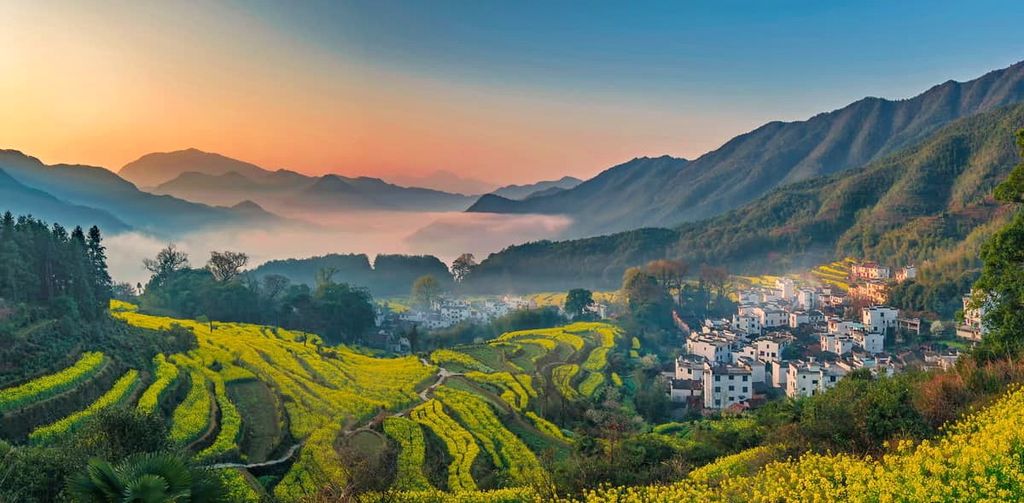
Jiangxi is located in south-central China, roughly halfway between Hong Kong and Shanghai. It’s home to four UNESCO World Heritage sites, a half dozen mountain ranges, and several cities with over a million residents each.
The province covers a total area of about 166,919 sq. km (64,448 sq. mi), which makes it roughly the size of Cambodia. About 45 million people live in Jiangxi, with about 60 percent of the population living in urbanized areas and 40 percent living in rural areas.
The provincial capital, Nanchang (南昌, Nánchāng) is the largest city in Jiangxi with 5.2 million residents. Other major cities include Ganzhou (赣州, Gànzhōu) in the south and Jiujiang (九江, Jiǔjiāng), which lies on the banks of the Yangtze (长江, Cháng Jiāng) in the far north. Despite being landlocked, Jiangxi actually has an international port on the Yangtze River in Jiujiang.
Because Jiangxi is adjacent to central, southern, and eastern China, it’s a diverse province with cultural characteristics from all three of these regions. The province shares a border with Zhejiang (浙江, Zhèjiāng), Anhui (安徽, Ānhuī), Hubei (湖北, Húběi), Hunan (湖南, Húnán), Guangdong (广东, Guǎngdōng), and Fujian (福建, Fújiàn) provinces.
Many of the people in Jiangxi are ethnically Gan (赣, Gàn), a subgroup of China’s largest ethnic group the Han (汉, Hàn). The Gan language group is widely spoken in the northern and central areas of the province. In the south, the Hakka (客家, Kèjiā, Hakka pronunciation: Hak-kâ) language is common. Jiangxi has the second-largest population of Hakka people in China.
In terms of topography, the northern part of Jiangxi is dominated by a wide plain and Poyang Lake (鄱阳湖, Póyáng Hú), the largest freshwater lake in China. The Gan River runs south to north through the entirety of the province, emptying into the lake.
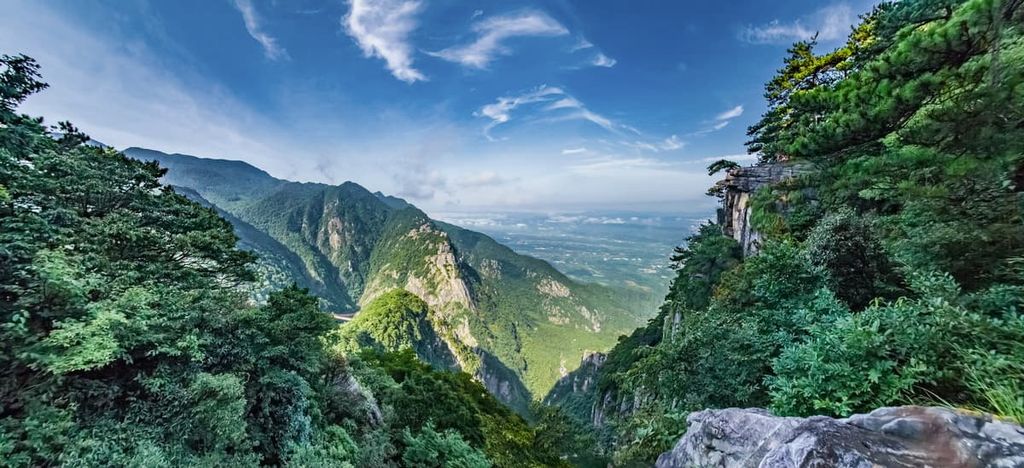
To the south, the plains give way to rolling hills, valleys, and higher mountains. Jiangxi is surrounded on three sides by mountain ranges: the Luoxiao mountains (罗霄山, Luóxiāo Shān) to the west, the Huaiyu (怀玉山, Huáiyù Shān), and Wuyi (武夷山, Wǔyí Shān) ranges to the east, and the Dayu Mountains (大庾山, Dàyǔ Shān) to the south.
Lying on Jiangxi’s eastern border, Huáng Gǎng Shān is the highest mountain in both Jiangxi and neighboring Fujian province. Other notable peaks in Jiangxi include the sacred mountains of Sanqing Shan (三清山, Sānqīng Shān) and Lu Shan, (庐山, Lúshān).
Sanqing Shan is sacred to Taoists, and Lu Shan contains temples and historic sites belonging to all three of China’s major faith traditions: Taoism, Confucianism, and Buddhism. Both mountains are UNESCO World Heritage sites.
If you’re looking for more hiking opportunities beyond Jiangxi, there are plenty of other destinations in the surrounding provinces.
The most famous hike in the region is Huangshan (黄山, Huángshān), which is located in the neighboring Anhui province. It is considered one of the most beautiful mountains in China. Additionally, just to the east of Jiangxi in Hunan province lies Heng Shan (衡山, Héng Shān), one of the Five Great Mountains, a group of peaks renowned throughout Chinese history.
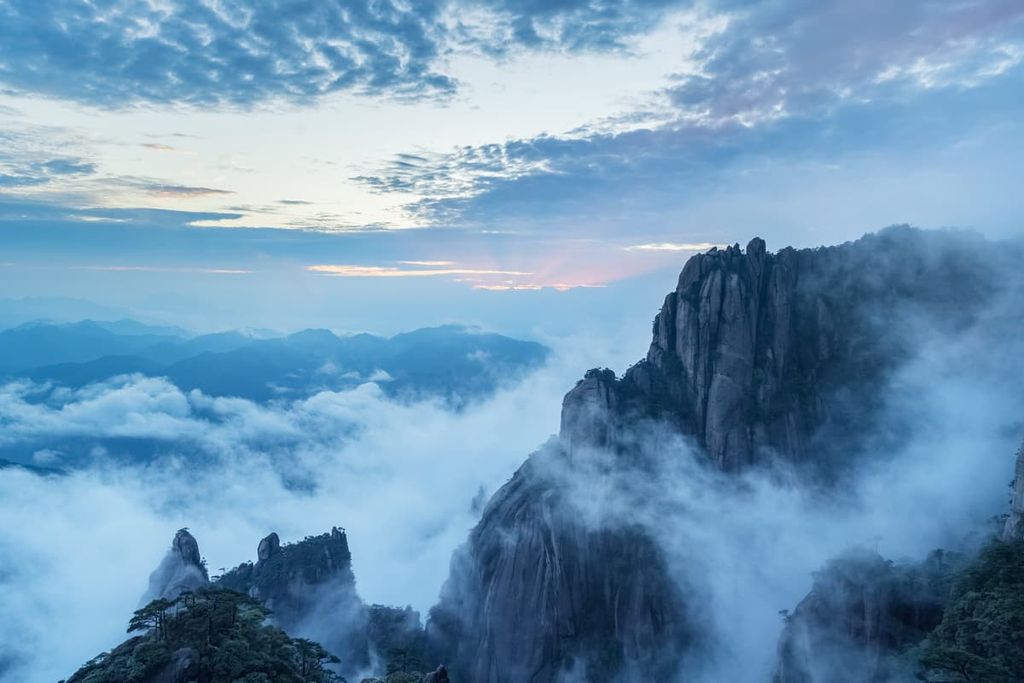
Jiangxi is a mountainous province with varied landscapes. Most of the mountains are considered part of the larger Nanling Mountains, which means “Southern Mountains.” This refers to a broad mountainous area in southern China.
Jiangxi is particularly rich in mineral resources, including gold, silver, uranium, copper, and tungsten. The largest copper producer in the country is headquartered in the province.
Some of the primary mountain ranges in the province include:
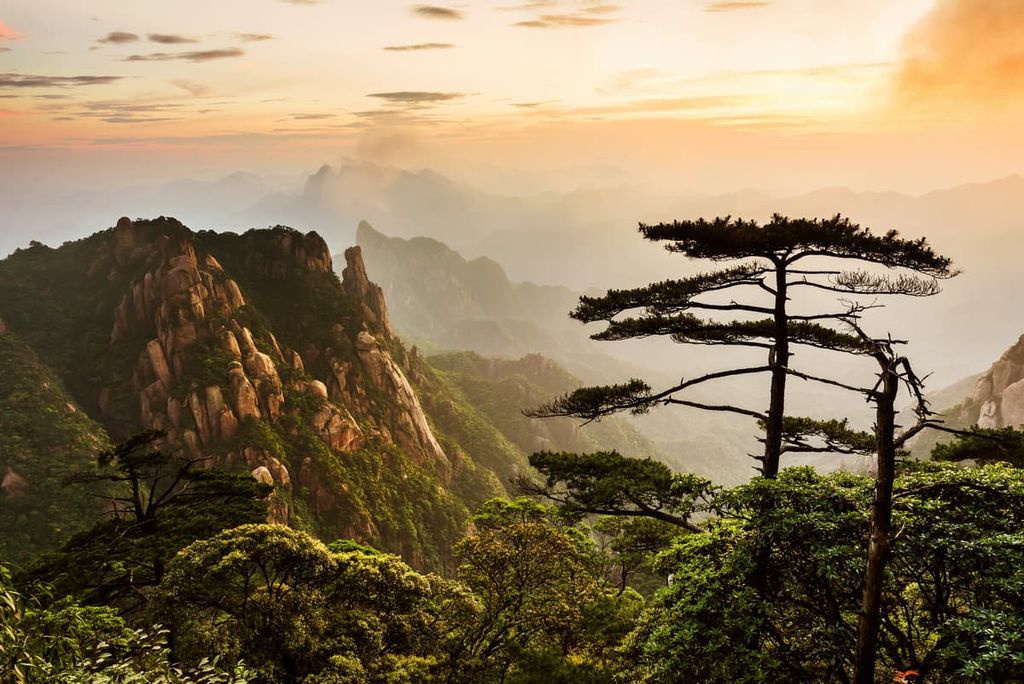
The Luoxiao Mountains (罗霄山, Luóxiāo Shān) lie in western Jiangxi, running into neighboring Hunan and Hubei provinces. There are a number of smaller mountain groups that make up the broader range, including the Wugong, Mufu, Jiuling, and Jinggang mountains, which are famous in China because they served as an important Red Army base during the Communist Revolution.
The Huaiyu Mountains (怀玉山, Huáiyù Shān) are a range located in Yushan County, on the border with Zhejiang province in the far northeast corner of Jiangxi. The premier attraction here is Sanqing Shan (三清山, Sānqīng Shān), a sacred mountain famous for its stunning granite spires.
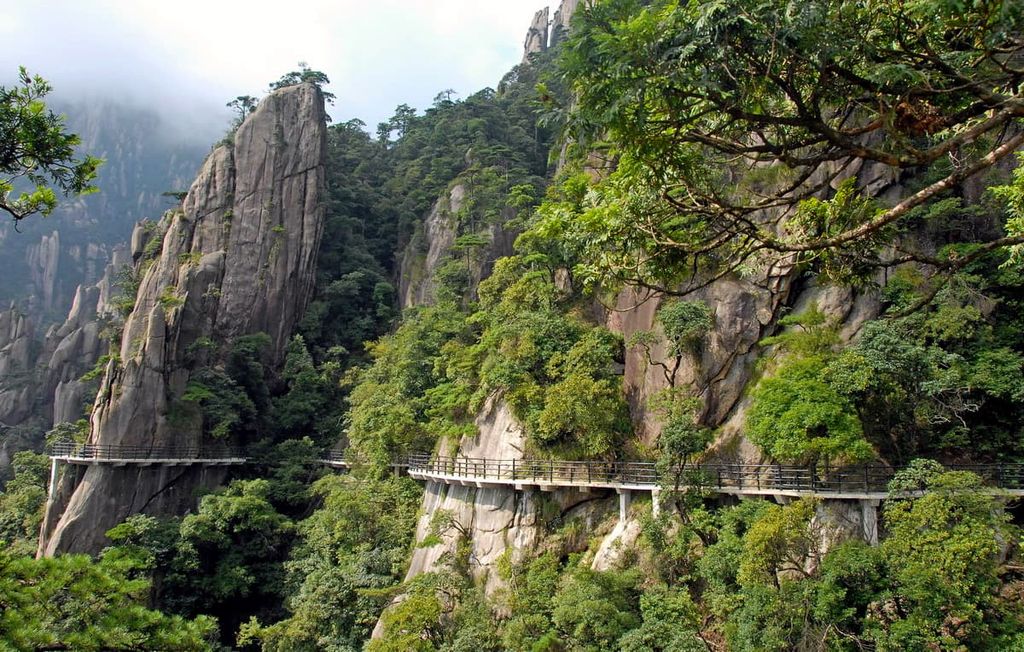
The Wuyi Mountains (武夷山, Wǔyí Shān) are located on Jiangxi’s eastern border with Fujian province. The area is famous for producing excellent teas. In fact, both black and oolong tea were potentially first harvested for human consumption in the Wuyi mountains.
The area is also notable for its biodiversity, towering Danxia landforms, and abundant temples and archeological sites. The Wuyi Mountains were declared a UNESCO Biosphere Reserve in 1987.
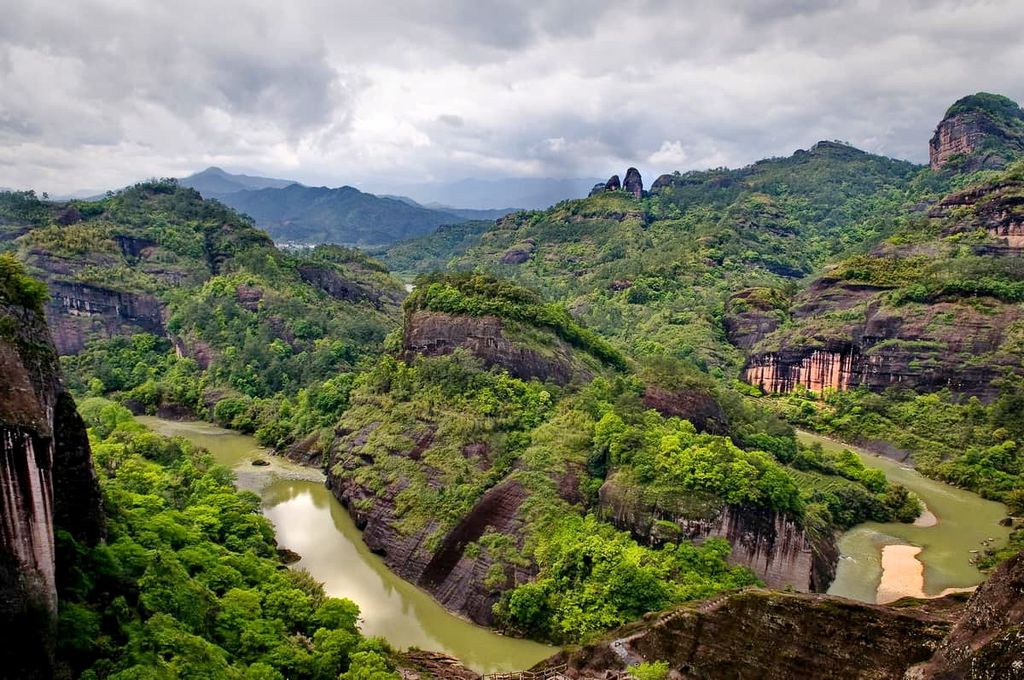
The Dayu Mountains (大庾山, Dàyǔ Shān) are a range in southern Jiangxi that runs southeast from Ganzhou into Guangdong province. The Dayu mountains separate the Pearl River system in the south from the Yangtze River basin in the north—two of China’s great river systems.
The Dayu Mountains are rich in mining and mineral resources, and they’re also the site of UNESCO-recognized Danxia landforms like Longhu Shan and Guifeng.
Jiangxi is famous for its lush, green forests and dense vegetation. The province lies within the humid subtropical climate zone, so it features cool, damp winters and extremely hot, humid summers. Fall and spring are usually the best times to visit the province.
Jiangxi is also famous for its biodiversity. There are nearly 100 species of mammals and over 450 species of birds in the province.
Poyang Lake in northern Jiangxi is a popular destination for migratory birds from all over Asia, including the endangered white crane. It’s considered one of the top bird-watching destinations in China.
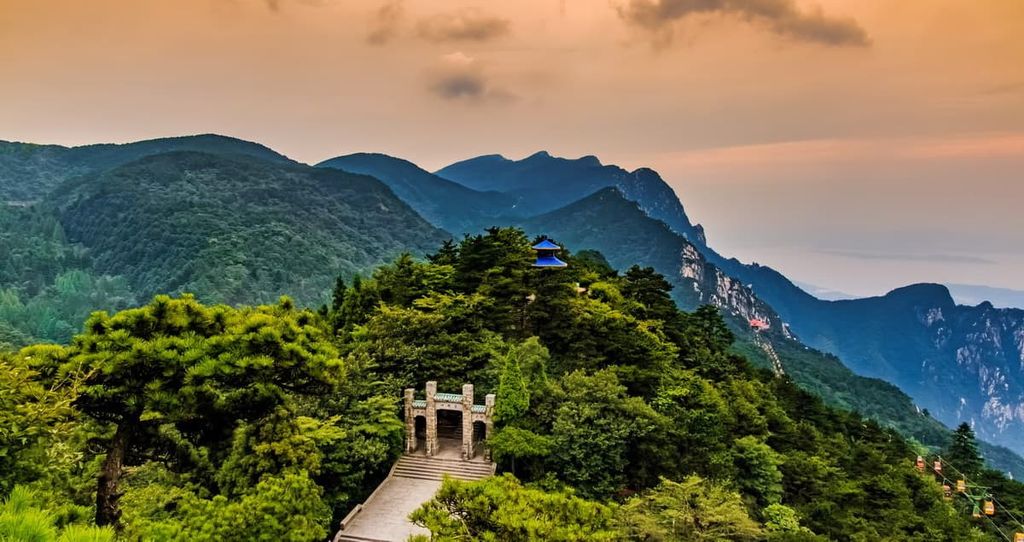
Jiangxi lies between major population centers around the Yangtze River in northern China and Guangdong province in the south, so it’s been a strategically important travel corridor throughout Chinese history.
The city of Jingdezhen in northern Jiangxi is famous for producing some of the finest porcelain in China. Most of the renowned porcelain artifacts in the Forbidden City and the National Museum in Beijing were made in the city. Jingdezhen has been a center for porcelain for at least a thousand years, and it’s still a popular destination for both domestic and international tourists who are looking for souvenirs.
In terms of more recent history, Jiangxi is heavily associated with events from China’s communist revolution. The mountainous, rural province was a base for the communist Red Army during China’s Civil War and World War II.
The Nanchang Uprising, one of the first major battles between the Nationalist and Communist forces during China’s Civil War, took place in Jiangxi’s capital in 1927. Yudu County in Jiangxi is also famous for being the start of the Long March, one of the most important events in the history of the Chinese Communist Party.
Today, many of these former revolutionary bases and sites are major tourist attractions in China.
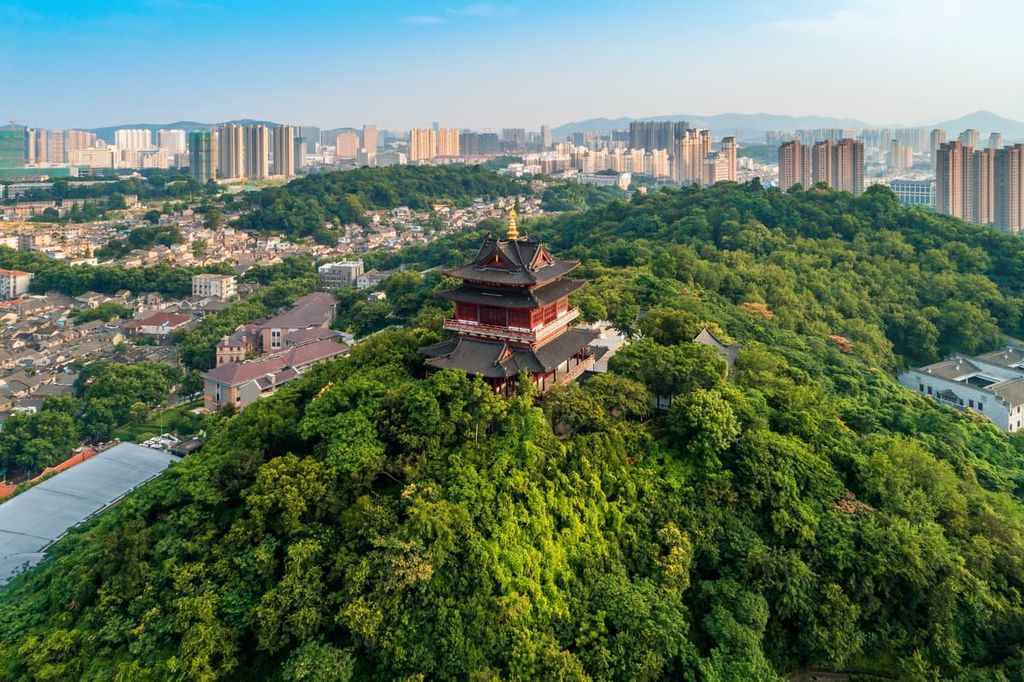
While Jiangxi lacks major, internationally-famous hiking destinations, the mountains here are equally stunning and sometimes more pleasant than the ultra-popular attractions in nearby Huangshan.
International visitors should be aware that Chinese hiking destinations can be very crowded and developed. These mountain parks usually feature steep entrance fees and hotels, restaurants, and cable cars on the mountains.
Don’t let the idea of development deter you from visiting, however. These parks are a unique place to visit and their incredible terrain is well worth the crowds and often overpriced food.
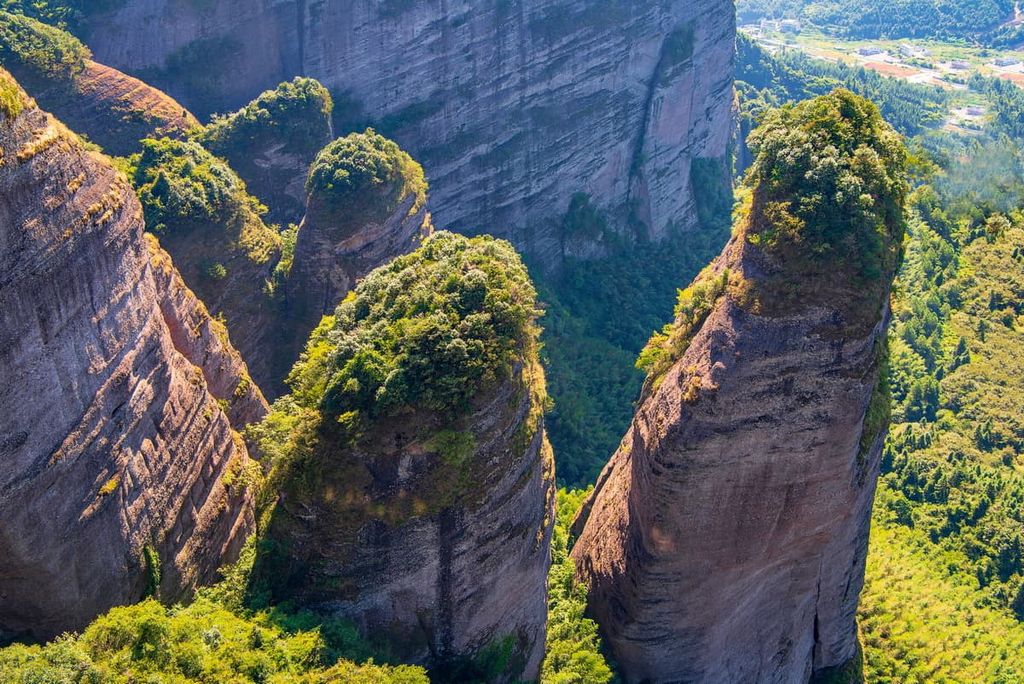
Sanqing Shan is a Taoist sacred mountain famous for its dramatic landscapes and 48 towering granite pillars. The near-vertical peaks are reminiscent of the famous Avatar mountains of Zhangjiajie (张家界, Zhāngjiājiè) in Hunan Province.
Sanqing Shan is made up of three main peaks in a ridgeline. The park is also famous for waterfalls, incredible views, and 23 gorges over 500 m (1,640 ft) deep. It’s a spectacular site and one of the most popular mountain parks in Jiangxi province.
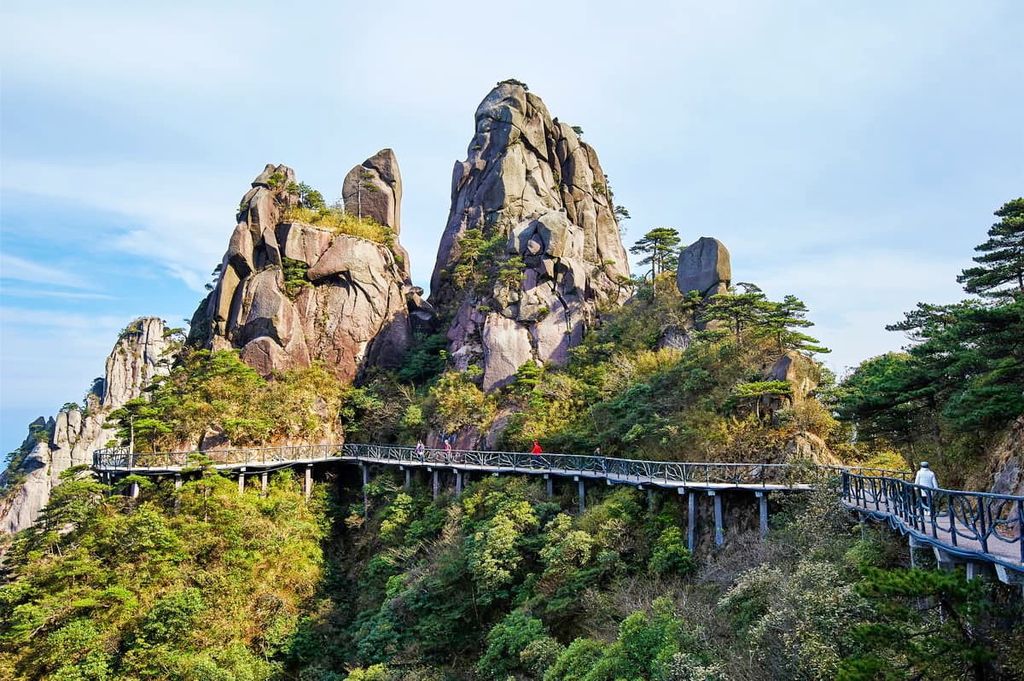
While there are stairs to the top of the mountain, most visitors opt to take the cable car at least halfway up the mountain (it will take most of the day to reach the summit if you walk). You can also take a cable car all the way to the top and walk around at the top. There are hotels and restaurants on the mountain to accommodate overnight stays.
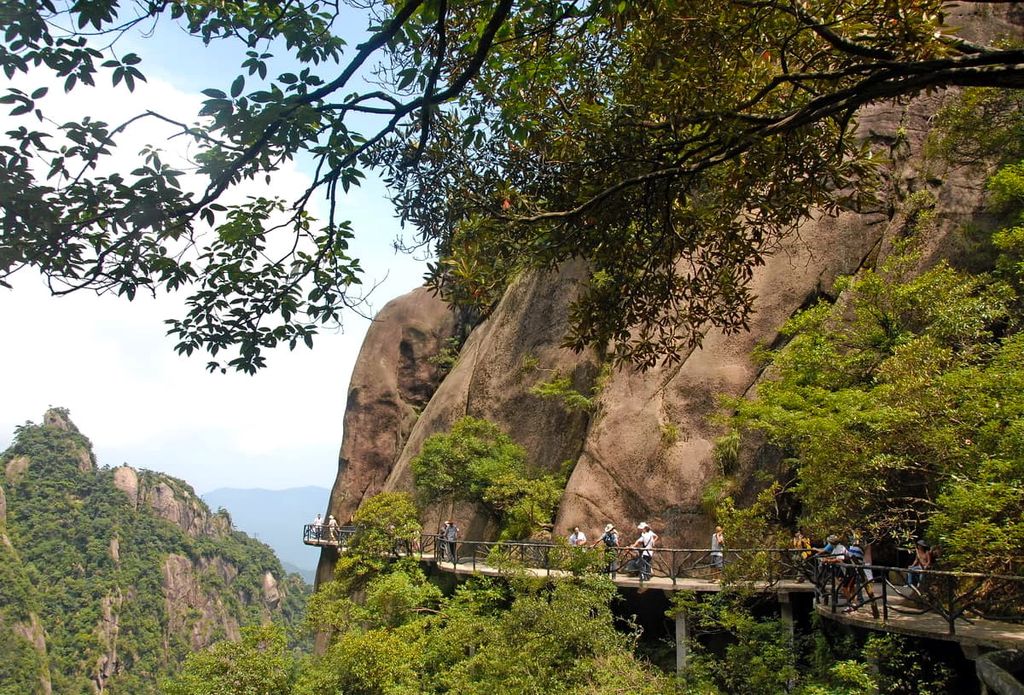
Along with Sanqing Shan, Lu Shan (庐山, Lúshān) is one of Jiangxi’s most popular mountain destinations. The area is a UNESCO World Heritage Site on account of its historic ties to Chinese Buddhism, Taoism, and Confucianism.
There are over 200 historic buildings in the park, some of which date back over 1,000 years. In addition to its historic setting, Lu Shan is an extremely beautiful area with over 100 mountain peaks.
Visiting all the numerous temples, historical sites, and short hikes will take at least two days. If you’re looking to relax after a long day on the mountain, there are hot springs nearby, too.

Longhu Shan (龙虎山, Lóng hǔ shān), the Dragon Tiger Mountain, is a smaller park than Sanqing Shan or Lu Shan, but it has some beautiful scenery and unique danxia landforms. The area is famous for its steep red cliffs.
Longhu Shan is considered one of the four sacred mountains of Taoism, and there’s a beautiful temple built into the side of a river cliff in the park. The main attraction in the park is a bamboo raft ride along the river. There are also built plank walks, which allow you to climb the cliffs for great views over the area.
If you’re looking for a more traditional hiking and camping experience, Wugong Shan (武功山, Wǔgōng Shān) in western Jiangxi is a great choice (though you should still come prepared for cable cars and restaurants).
Wugong Shan is higher in elevation than the other mountain parks in the province. The peaks of the range are above treeline, featuring alpine meadows with spectacular views. You can hike the entire ridgeline over several days, or take a cable car to the summit of Jinding (金顶, Jīn Dǐng), the highest peak. You can rent a tent at the top if you don’t have your own gear.
Wugong Shan is particularly famous for temperature inversions, where clouds fill the valleys below the peaks of the range. Most people come to Wugong Shan to camp in hopes of seeing the “sea of clouds” (云海, yúnhǎi).
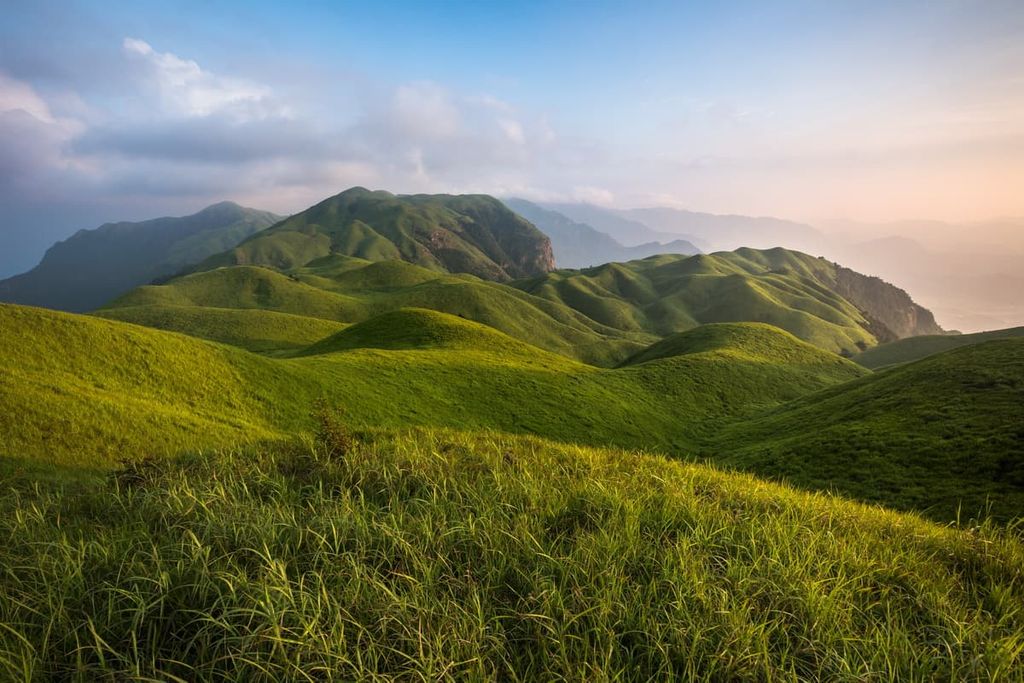
If you’re looking to get off the beaten track and see Chinese cities outside of Beijing and Shanghai, Jiangxi has a lot to offer.
Nanchang, with over 5 million inhabitants, is Jiangxi’s capital and a major transportation hub. Visiting any of the mountain destinations listed above will likely include a train or bus change in Nanchang.
While it’s not a major destination for international tourists, there are still quite a few things to see and do in Nanchang. The most famous attraction is the Pavilion of Prince Teng, which was first built in 653 CE (although it’s been rebuilt nearly 30 times). It’s considered one of the four most beautiful ancient towers in southern China.
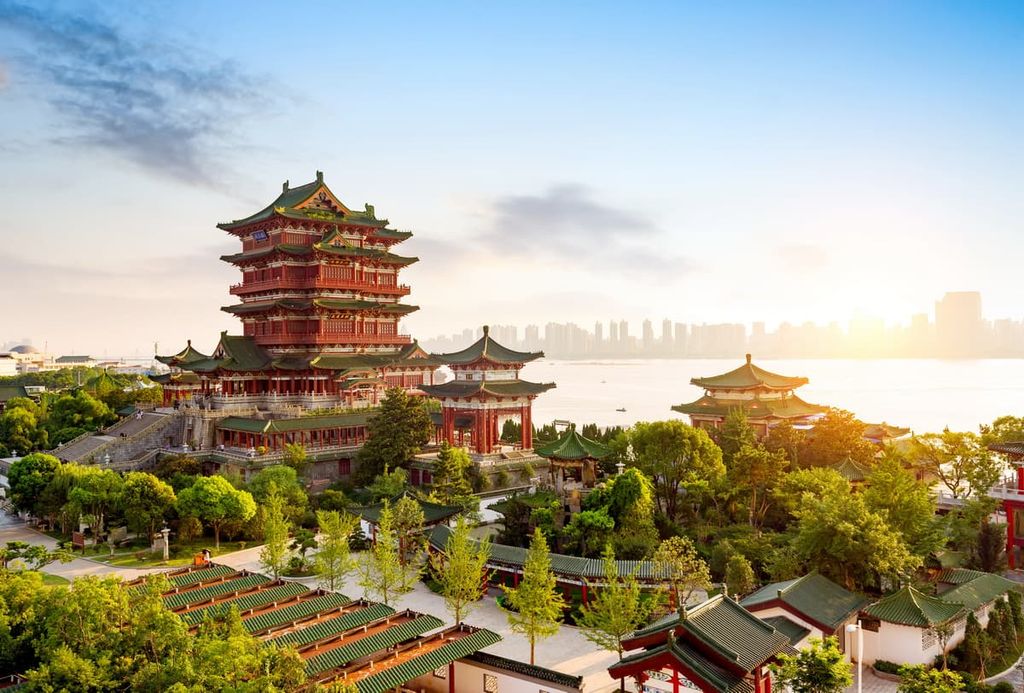
Jingdezhen has long been considered the center of porcelain production in China, and it’s still a world-famous destination for fine Chinese pottery. There are ancient kiln sites and museums, but shopping for porcelain is the main attraction here.
Sanbao town outside the city provides a beautiful village setting where you can talk with the artisans while shopping. While it’s not a hiking destination, the city is close to Poyang Lake and Wuyuan County, which is famous for its scenic traditional villages.
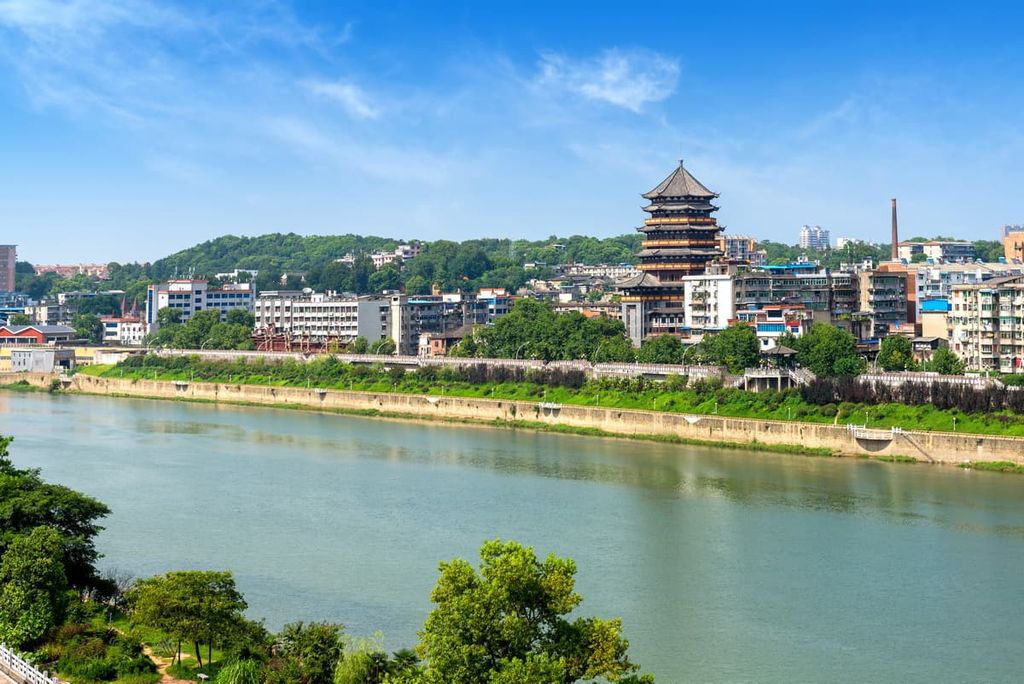
Ganzhou is not frequently visited by international tourists, but it’s a unique city within China and a good destination for someone looking to experience a different side of Chinese culture. Ganzhou is home to one of the largest populations of Hakka people within China, so you’ll see some different cuisine and cultural elements than you’ll find in a traditional Han Chinese city.
One interesting attraction in Ganzhou is Tongtian Cliff, a danxia landform with hundreds of carved niches housing statues of the Buddha. It’s the largest of these Buddhist cave temple complexes in southern China, with statues dating back over 1,000 years to the Tang and Song dynasties.
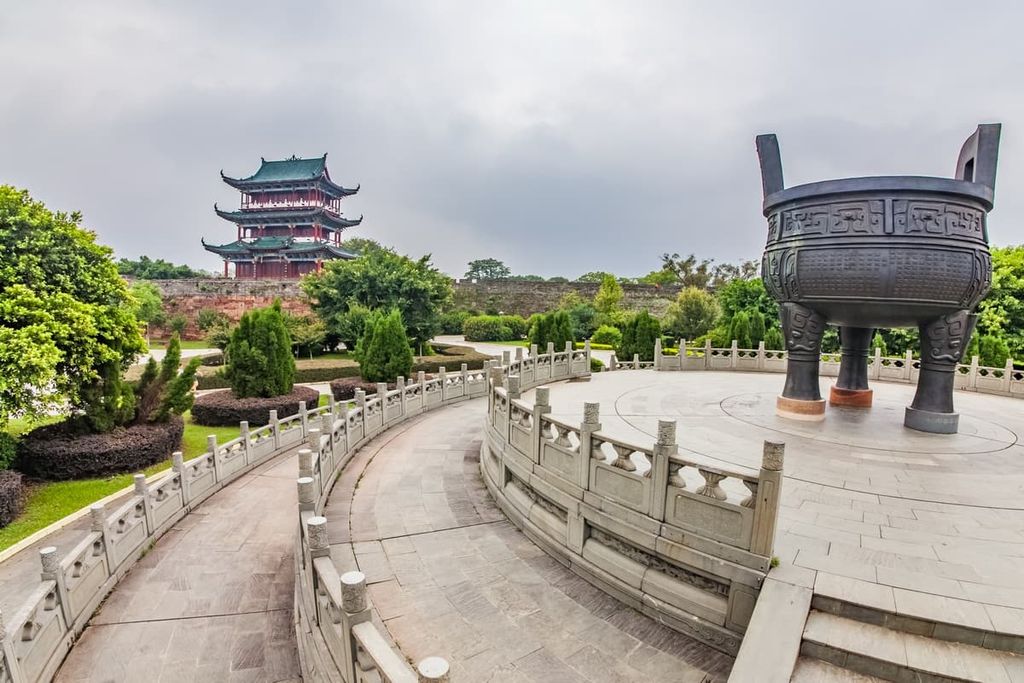
Explore Jiangxi with the PeakVisor 3D Map and identify its summits.








